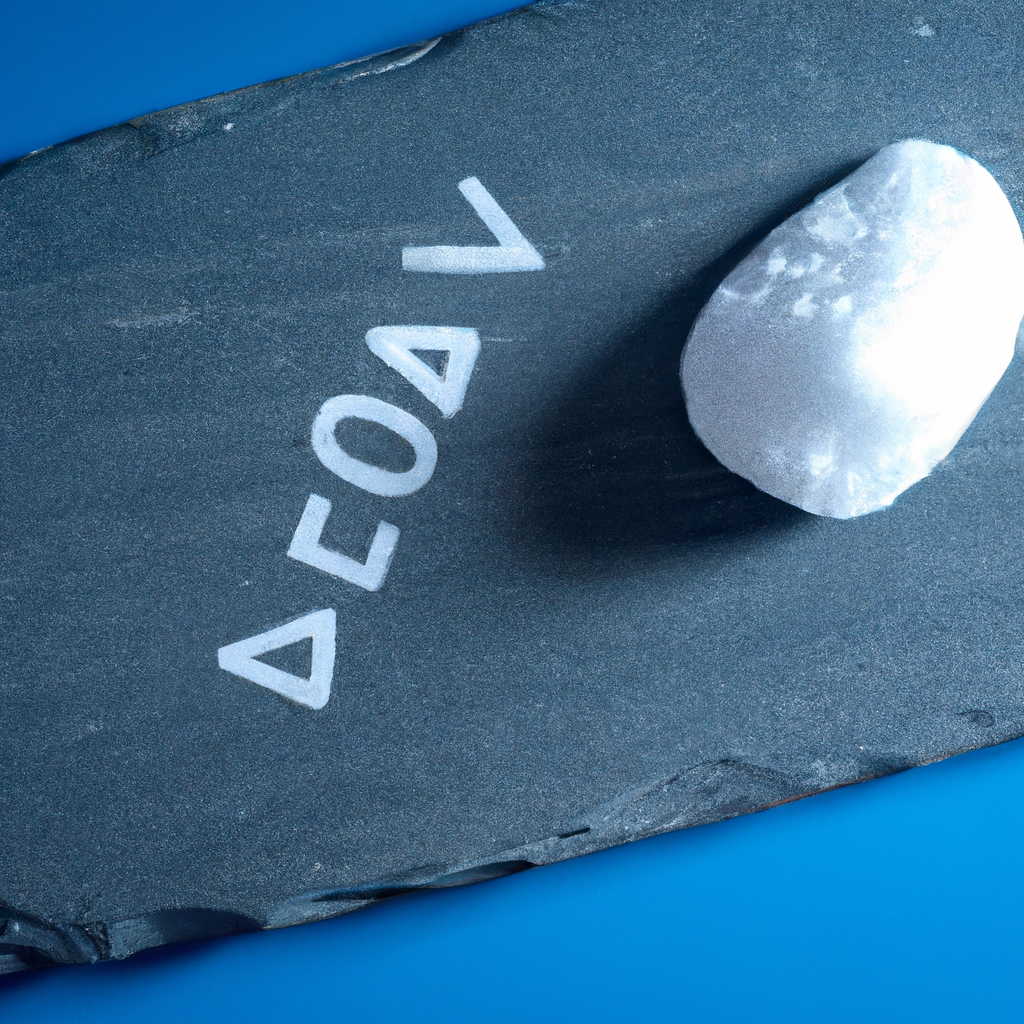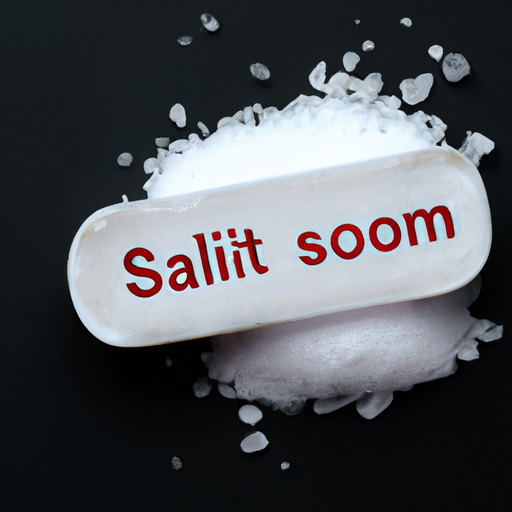Do you find that you’re consuming too much sodium in your diet? Are you finding yourself torn between wanting to maintain a healthy lifestyle without having to sacrifice flavor? Low sodium salt may be the solution to reducing your sodium intake without having to make any significant flavor compromises. In this article, we’ll explore the potential health benefits of low sodium salt and how it differs from regular salt.
1. The Benefits of Reduced Sodium Intake
Reducing sodium intake is an effective way to improve your overall health and wellbeing. Here are some of the benefits of lowering the salt in your diet.
- It can reduce your risk of high blood pressure and heart disease. High sodium levels can cause your body to retain water, increasing your blood pressure. If you maintain low sodium levels, your body can naturally balance its sodium and water levels, reducing your risk of high blood pressure and heart disease.
- It can reduce inflammation. When too much sodium is present, fluid can accumulate in the tissues, causing inflammation. Lowering sodium levels can help to reduce this inflammation.
- It can improve your digestive system. Too much sodium in your diet can disrupt the balance of electrolytes in your body, leading to gastrointestinal problems. Reducing the amount of sodium in your diet can help restore this balance, allowing your digestive system to work more efficiently.
Overall, reducing your sodium intake can have a huge positive impact on your health. By making simple adjustments to your diet and cutting out unnecessary sodium, you can give your body the opportunity to reap the benefits of lowered levels of salt.
2. Exploring Low Sodium Salt as an Alternative
In an effort to reduce sodium intake, many individuals are turning to low sodium salt as an alternative to traditional table salt and other high sodium seasonings. While the health benefits of low sodium salt are well known, many people are unaware of just how much a difference it can make in their cooking and salt intake.
Low sodium salt has many advantages. First, it contains less than half the amount of sodium that traditional table salt does. This makes it an ideal choice for chefs and health-conscious individuals alike. It also has a mild, subtly sweet flavour that adds depth to otherwise simple dishes. In addition, it’s usually less processed than regular table salt so you’re getting the real flavours from the food without extra sodium.
- Lower Sodium Intake – Less sodium means you can lower your daily salt total, helping to reduce your risk of health-related issues such as high blood pressure, stroke, and heart disease.
- Simpler Cooking – Low sodium salt’s subtle flavour opens up a world of possibilities in the kitchen. You can experiment with new recipes, as well as make small tweaks to existing favourites, such as swapping out regular salt with low sodium.
- Healthier Eating – By using low sodium salt in your cooking, you can still enjoy the same range of delicious, healthy foods without all the sodium.
3. Risks of Excess Sodium Intake
Excess sodium in our diets can be hazardous to our health. Consuming too much sodium can have a detrimental effect on our bodies especially in the long term and also increase our risks for serious health issues. Here’s a look at some of the risks associated with excess sodium intake.
- Raised Blood Pressure: One of the most common is a raised blood pressure, also known as hypertension. This is because excessive sodium can cause water retention, increasing levels in both the blood and the kidneys. This can lead to increased blood pressure and a higher risk for cardiovascular diseases.
- Stroke Risk: Excess levels of sodium can also increase the risk of stroke due to its effect on blood pressure and also increasing the chances for blood clots. Too much salt in the diet works on restricting small blood vessels that can lead to stroke.
Though some sodium intake is essential, it is important to keep an eye on how much you are consuming. A balanced diet and exercising regularly can also help keep the amount of sodium in the body in check.
4. Is Low Sodium Salt the Answer?
Low Sodium Salt: The Healthy Diabetes Choice?
Low sodium salt has become a popular alternative to regular salt for those looking to reduce their intake of sodium, a major factor in many diabetes risk factors. But is this lower-sodium version of salt really the best choice for diabetics?
The simple answer is yes. While it is true that both types of salt are rich in minerals such as sodium, magnesium and calcium, low sodium salt contains far less sodium per teaspoon than regular salt. It’s also low in calories. By choosing to sprinkle foods with low-sodium salt, diabetics can reduce sodium intake without giving up flavor.
In addition to providing nutritional benefits, the use of low-sodium salt can help improve blood glucose control. Diabetics have an increased risk for developing cardiovascular disease, making it all the more important to reduce their sodium intake. By using low-sodium salt, they can reduce their risk of heart attack and stroke.
It’s important to remember, however, that any type of salt should be consumed in moderation. Even low-sodium salt should not be viewed as a healthy alternative to regular salt, but rather as a useful alternative for diabetics.
Q&A
Q: What is low sodium salt?
A: Low sodium salt is a type of salt substitute that has less sodium than regular table salt. It contains other minerals such as potassium, magnesium, and calcium instead of sodium chloride.
Q: Is it better than regular table salt?
A: Low sodium salt is lower in sodium, which means it can help reduce your overall salt intake. However, it is important to note that it does not provide the same salty flavor as table salt, so it may not be the ideal choice for all dishes.
Q: How can I use low sodium salt?
A: You can use low sodium salt in most recipes the same way you would use table salt. You may need to add other seasonings for flavor, as low sodium salt does not provide as much salty flavor. Additionally, it’s best to avoid adding extra salt to dishes if possible.
Q: Are there any other health benefits to using low sodium salt?
A: Not only is low sodium salt lower in sodium, but it also contains essential minerals, including potassium, magnesium, and calcium. These minerals help support overall health and may help reduce the risk of developing certain health conditions.
Overall, low sodium salts may be an attractive alternative for reducing sodium intake—but moderation is key. While our body needs sodium to stay healthy, too much or too little can promote health issues. Always read food labels and if possible, opt for fresh foods and spices to ensure you’re getting the nutrients you need without going overboard.
In recent years, an ongoing debate has raged about the potential benefit of switching to a low sodium salt for reducing sodium intake. Salt is a widely used food seasoning and preservative, associated with a variety of health problems, such as hypertension, edema and high blood pressure. As a result, it makes sense that reducing overall sodium intake is beneficial for individuals wishing to maintain a healthy lifestyle.
There is evidence that consuming a low-sodium salt such as potassium chloride is preferable to regular table salt. One of the main advantages of using a low-sodium salt is that it can provide a more balanced sodium-potassium ratio in the diet. High levels of sodium can lead to an imbalance in the body’s electrolyte balance which can cause a range of health problems. Furthermore, a low-sodium salt may help to reduce sodium intake, as studies have suggested that it may reduce sodium levels by up to 40%.
Additionally, a low sodium salt may provide more flavor than traditional table salt as there is less sodium per teaspoon. This could help reduce the overall amount of salt used in recipes, which can have a positive effect on reducing the overall sodium intake. Furthermore, replacing table salt with a low sodium salt is an easy way of making meals more nutritious without having to modify the recipe or ingredients.
In conclusion, it appears that using a low-sodium salt is a sensible choice if one is looking to reduce their sodium intake. Low sodium salts come with a variety of potential health benefits such as improved electrolyte balance and reduced sodium intake. Furthermore, they could potentially help provide meals which are more palatable with fewer ingredients. Therefore, it seems that switching to a low-sodium salt is a viable alternative for those looking to reduce their sodium intake.
